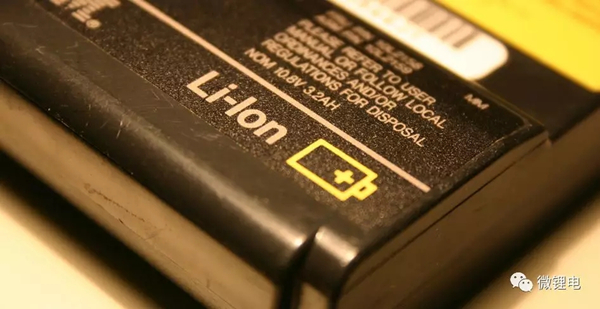Lithium Ion Battery Maintenance
Oct 18, 2019 Pageview:1499
In our mobile world today, battery life is now a very precious factor people consider. It is even more precious than we once thought it will be. People could almost get into a nasty fight if they require charging their device, but with a limited number of wall sockets.
It does not require rocket science to know how to make the charge on your device battery to last longer than it is or how to preserve it. What is still not clear to many people is how to maintain the battery itself. That is equally important to know. This allows the battery to function efficiently. In this article, we will show you how to maintain your battery and get the best of it.
How do you service a lithium-ion battery?
There are several reasons why people experience battery failure. One of the numerous reasons is probably that the battery has not been charged, or wasn’t properly done before use. The pack may also have been on the shelve for a long time, or the charger may not be functioning properly. A lack of understanding of batteries can also be the cause. The real reason may also never be known.
Lithium-ion batteries usually contain a protection circuit which protects the battery against any form of misuse. This is a very important protection feature that also shuts the battery off, thereby making it unusable in case of excessive discharge. Sleep mode can occur if you keep a lithium-ion pack in an uncharged or a discharged state for a certain period. This is because self-discharge gradually depletes the remaining charge. Depending on the various manufacturers, a lithium-ion protection circuit may cut-off between 2.2 and 2.9 V per cell battery.
Some chargers and analyzers (including the Cad ex) have a wake-up or “boost” function to help reactivate and charge any sleeping battery. Without this arrangement, using just a charger would leave these batteries unserviceable and they would ultimately become useless and thrown away. The Boost will apply a small charge current to the battery in other to reactivate the protection circuit. Then if a correct cell voltage is reached, the charger will begin a normal charge.
Phone manufacturers know that more than 80% to 90% of the returned batteries do not have as many problems as feared by the end-user. So to service the batteries, they easily use an analyzer and the battery will be back up again. The other 10% or 20% are often revived when their safety circuit is revived using a boot program and also by applying discharge or charge circles.
How often do you maintain a lithium-ion battery?
In general, the lifespan of a modern lithium-ion battery is estimated by most manufacturers to be between 2 and 3 years, i.e. the battery has a life spanning between 300 and 500 charge cycles. Subsequently, the capacity of the battery is reduced by about 20% after the first year. How often you maintain your battery must span the battery lifetime, and you should ensure to take care of your battery for as long as you use it.
1.Store the batteries at room temperature
This means you should endeavor to store your batteries between 20 and 25 degrees Celsius. It is a very bad thing for a well-charged lithium-ion battery to be exposed to high heat or temperature. Do not leave or charge your mobile device battery in your car in hot weather. Heat is your battery’s most dangerous degrading factor.
2.Consider using a high-capacity lithium-ion battery instead of a spare battery
Most people believe having a spare battery would help them either prolong their battery life or not get degraded so soon. Your best bet is to buy a battery with a high capacity. The reason is that batteries deteriorate with time, so irrespective of if you use it or not, it will keep degrading as long as it is out of the battery manufacturers' factory. This is also why you should always ensure you buy a battery that was recently manufactured.
3.Allow partial discharge and not full discharge (except on rare occasions)
Lithium-ion batteries don’t have the usual charge memory NiCad batteries are known for, so it is not necessary to fully discharge them to reset them. In fact, you will be causing the battery more harm than good if you always discharge your battery fully. Only on very rare occasions should you completely discharge your battery, and this is only in other to recalibrate your battery. (this is only advised if your battery suddenly drops to, for instance, 20% from 80%, then you need to recalibrate it). You may also do this after 30+ charges and discharges.
Another battery maintenance practice aside from avoiding a complete discharge of your battery is to discharge it up to the 40% mark before storing the battery. Also, remember to store it in a cool and dry place.
What is a maintenance-free battery?
Maintenance-free batteries are delivered sealed from the factory and they do not need any form of maintenance of the battery’s electrolyte level. One of the most important benefits of the batteries is that they have a sealed design and there is no maintenance required of the battery, except of course to ensure that the battery is clean and fully charged.
Maintenance-free batteries are known to only lose electrolytes that are insignificant to the maintainable battery models. This helps the maintenance-free batteries have extended battery life.
The maintenance-free battery has several modifications compared to conventional batteries. The most important feature, however, is that the batteries are sealed (except for the very small ventilation spaces available), the battery does not require any service attention.
There has been an elimination of the antimony from the plate grids. These are what eliminates the four major reasons why early battery failure occurs. Failures like overcharge, thermal runaway, self-discharge, water usage, etc. Thermal runaway is one of the conditions that occur in conventional batteries when the operating temperature of the battery is high or when an incorrect control of the charging system is associated with an increase in the temperature of the electrolyte.
- Prev Article: 16650 Battery Vs 18650 Analysis
- Next Article: Types of Rechargeable Batteries
Leave Message
Hottest Categories
-
Hottest Industry News
-
Latest Industry News











